Cristina Eisenberg, PhD, Oregon State University, cristina.eisenberg@oregonstate.edu
Cristina is a community ecologist and author who has spent a decade and a half studying community ecology in aspen forests and grasslands, including the effects of fire, grazing by large herbivores, and predation. She is Latina and Native American and holds a PhD in Forestry and Wildlife from Oregon State University and an MA in Conservation Biology from Prescott College. She studies how ecological restoration that incorporates Traditional Ecological Knowledge benefits whole ecosystems globally. The former Chief Scientist at Earthwatch Institute, she is currently graduate faculty at Oregon State University in the College of Forestry. A Smithsonian Research Associate and Boone and Crockett Club professional member, she serves on the board of Society for Ecological Restoration, where she chairs the Traditional Ecological Knowledge Working Group. She is a Trustee at Prescott College. Her books for Island Press include The Carnivore Way and The Wolf’s Tooth. She is currently working on a book on wildlife and climate change and another on bison repatriation.
ABSTRACT
Restoring Native Fescue Prairie Using Fire and TEK in Waterton Lakes National Park and the Blood Timber Limit
For millennia, Indigenous people have created more productive, healthy ecosystems by modifying them with fire, and by altering the movements of important wildlife species such as bison (Bison bison). These practices, part of Traditional Ecological Knowledge (TEK), created healthy, productive soils, increased biodiversity and ecosystem resiliency and vigor, and sustained human health. Further, fire and bison are keystone forces that helped create North American grasslands and maintain them. On the Northwestern Plains, in the Foothills Parkland Ecoregion of Alberta, settler colonialism, which involved eliminating bison and suppressing fire, and introducing agronomic grass species, created extensive ecological damage to fescue (Festuca spp.) grasslands and also caused aspen (Populus tremuloides) encroachment onto the prairie. Since 2006, Waterton Lakes National Park (WLNP) has been restoring the prairie in this ecoregion by setting prescribed fires. We have been measuring grassland and aspen ecological responses to these fires since 2008. Additionally, in 2017 the Kenow wildfire burned our study site with mostly extreme severity, creating a new research landscape. Here we present findings from our research conducted over the past 11 years, and compare the grassland’s response to prescribed fire versus wildfire. We discuss how our research contributes to and helps inform Parks Canada adaptive management linking TEK and Western science to restore the prairie. The Kainai First Nation bison reintroduction underway in this ecosystem on tribal rangeland highlights the need to understand how seemingly “catastrophic” wildfire in an area restored with prescribed fire affects the prairie.

